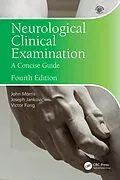This book and video collection provide a practical guide to the clinical neurological examination, an essential tool in the diagnosis of neurological conditions encountered in the outpatient clinic and hospital ward.
- Each chapter covers a different condition and uses a step-by-step approach selecting those aspects of the clinical examination which are most likely to lead to the correct diagnosis
- Video clips accessible via both a companion website and by QR codes within the book provide easy access to view a wide range of neurological signs
- The text is illustrated with clear diagrams
- Tables are used to list the various causes of particular signs
Primary care physicians, neurologists, and trainees preparing for certifying examinations will find this book an invaluable learning companion and essential tool for the diagnosis of neurological disorders.
Autorentext
Professor John GL Morris DM (OXON) FRACP FRCP
Emeritus Consultant, Westmead Hospital
Past Clinical Professor, University of Sydney
Past Chairman of the Education and Training Committee of the Australian and New
Zealand Association of Neurologists
Past Examiner for the Royal Australasian College of Physicians
Past Head of the Neurology Department, Westmead Hospital, Past President of the
Australian Association of Neurologists, Sydney, Australia
Professor Joseph Jankovic MD
Professor of Neurology
Distinguished Chair in Movement Disorders
Director, Parkinson's Disease Center and Movement Disorders Clinic
Co-Director, Parkinson's Disease Research Laboratory,
Past President of the Movement Disorders Society,
Department of Neurology, Baylor College of Medicine, Houston, Texas, USA
Associate Professor Victor Fung MBBS (Hons) PhD FRACP
Conjoint Associate Professor, Sydney Medical School, University of Sydney
Director, Movement Disorders Unit, Department of Neurology, Westmead Hospital, Sydney, Australia
Past Head, Department of Neurology, Westmead Hospital, Sydney, Australia
Chair, Asia Pacific Affairs Committee, Australian and New Zealand Association of Neurologists
President-Elect, International Parkinson and Movement Disorder Society
Inhalt
1. The wasted hand. 2. Wrist drop. 3. Proximal weakness of the arm(s). 4. Proximal weakness of the leg(s). 5. Foot drop. 6. Ataxia and gait disturbance. 7. Facial weakness. 8. Ptosis. 9. Abnormalities of vision or eye movement. 10. Tremor and cerebellar signs. 11. Other abnormal involuntary movements. 12. Language and speech disturbance. 13. Higher cortical function testing. 14. Assessment of coma. 15. Psychogenic (functional) neurological examination. 16. Telemedicine and the neurological examination.
